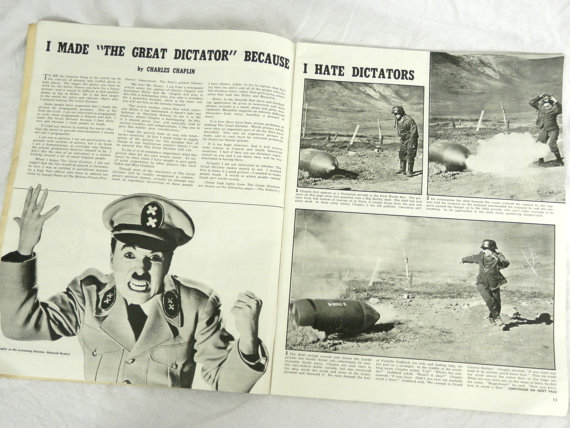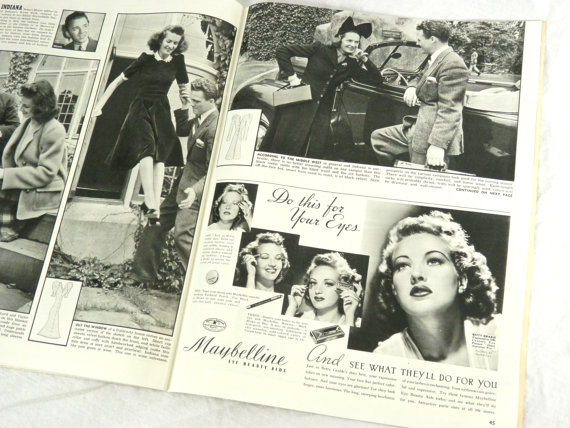Tuesday 24 September 1940
The Vichy French have submarines in the area, and shortly after sunrise the British force their submarine Ajax to surface. This is a joint exercise between Swordfish operating from the Ark Royal and patrolling destroyers. The Swordfish bomb the submarine and force it to surface. The Vichy French crew then scuttles the badly damaged sub. Destroyer HMS Fortune rescues the 61-man crew. There are different versions of this action in which the destroyer, and not the planes, cause the sub to surface and scuttle, and likely it was some combination of forces.
The Vichy French retaliate for the attack by sending 64 aircraft based in Morocco and Algeria over Gibraltar. They drop 150 bombs on the British base and cause damage to the dock area, especially the South Mole area. This attack is somewhat unusual because heretofore the Armée de l'Air de Vichy bombers have made perfunctory runs and dropped many of their bombs out at sea. Somewhat perversely, this is the largest air raid of the war to date by the French Air Force, including the Battle of France.
Battle of the Atlantic: The Luftwaffe bombs and sinks classic 1815 ship of the line HMS Wellesley at its dock on the Thames. The ship sinks in shallow water and can be salvaged, but it is damaged beyond repair. HMS Wellesley has the distinction of being the last ship of the line to be lost in enemy action and the only one lost by air attack. Its figurehead now graces the entrance to Chatham Dockyard.
The Luftwaffe bombs and sinks 169-ton British trawler Bass Rock about 40 km southwest of County Cork, Ireland. Four crew perish and four perish, that's the lottery of the Battle of the North Atlantic, pick your number and take your chances.
German torpedo boat S-30 torpedoes and sinks 555 ton Continental Coaster off Happisburgh, Norfolk (off Great Yarmouth) in the North Sea. Four crew perish.
Royal Navy 20 ton motor torpedo boat HMS MTB 15 hits a mine and sinks 56 km northeast of North Foreland, Kent (Thames Estuary) in the North Sea. These carry a complement of 9-12 men, and it is unclear if there are any survivors.
HMS Tuna torpedoes and sinks 1280 ton submarine tender ("catapult vessel") Ostmark southwest of Saint-Nazaire in the Bay of Biscay. The Ostmark is a Deutsche Lufthansa vessel on its way to Germany for commissioning into the Kriegsmarine, and the plan is to use the Ostmark to launch long-range reconnaissance aircraft from Brest (contemplated as the new main U-boat base in France). So, technically, it is not a loss for the Germany Navy. However, the loss is noticed in Berlin and is an early indication to the Germans that the Atlantic coast shipping area is vulnerable and security there needs to be upgraded - a turn to the defensive. The Tuna, for its part, is having an excellent patrol, having sunk the Tirranna on the 22nd.
The Luftwaffe damages anti-submarine trawler HMT Loch Monteith operating in the Channel. Seven crew perish.
British submarine Cachalot spots an unidentified U-boat in the southwest approaches and fires torpedoes but misses.
Convoy OA 219 departs from Methil, Convoy FN 290 departs from Southend, Convoy FS 289 departs from the Tyne, Convoys OB 218 and OL 4 depart from Liverpool, Convoy SL 495 departs from Freetown.
German cruiser Admiral Hipper leaves Wilhelmshaven to attempt to break out into the Atlantic but soon loses all engine power due to a fire in the engine oil feed system. It drifts aimlessly for several hours before repairs are effected and the ship can return to Hamburg for more permanent repairs.
U-106 (Oberleutnant zur See Jürgen Oesten) is commissioned.
The first Luftwaffe attacks begin around 08:30. This time, it is 200+ plane formation that includes a large formation of Junkers Ju 88s. RAF Fighter Command sends up 11 squadrons, which intercept the Luftwaffe planes over the Thames Estuary. The bombers turn back, some badly damaged, and the fighters engage in dogfights which result in some RAF losses.
Around 11:00, the Luftwaffe sends over more planes. One force attacks coastal towns, but Adolf Galland's JG 26 is hunting for RAF fighters over the Thames Estuary and finds them. Both sides lose a plane.
An eerie calm descends around noontime. Luftwaffe pilots jokingly praise the "Anglo-Saxon custom of lunch" for such a quiet period. However, things heat up again soon thereafter.
The Luftwaffe sends more fighters over during the early afternoon. RAF No. 41 Squadron loses a couple of planes. Some Bf 110s of I./Epr.Gr 210, 4./ZG 76 and III./ZG 76 then raid Southampton and Portsmouth, bombing the Woolston Spitfire factory. A "lucky" hit on a shelter there kills 100 workers, but the factory itself is unscathed. For some reason, Fighter Command does not intercept this formation, accounting for its great success, but anti-aircraft fire downs three of the fighter-bombers.
Around 16:00, another formation crosses near the Isle of Wight. This time, Fighter Command intercepts and downs four bombers.
After dark (which is coming much earlier now), the Luftwaffe targets London, Shoreham, Portsmouth, Plymouth, Hull, Humberside, Newcastle, Manchester, Middlesborough, and South Wales. The London West End takes some damage, as does Westminster. The attacks are widespread and scattered, causing fairly random damage. The largest raid is in Liverpool, which is bombed by II,/KG 27 from midnight until first light. RAF Feltwell takes some damage during the final raids of the night.
Overall, losses are fairly light on both sides. The Luftwaffe loses about 10 planes (depends how you count the several bombers heavily damaged but which make it back to France), while the RAF loses about half that number.
Adolf Galland gets credit for his 40th claim. The victim is ace Harold Bird-Wilson of RAF No. 17 Squadron (baled out badly burned into the Thames, picked up by a riverboat). Galland is hot on the trail of Werner Mölders, who has a few more victories at this point. This victory entitles Galland to the Oak Leaves, which he receives at the hand of Adolf Hitler. Hitler, aware of Galland's somewhat impertinent comment to Reichsmarschall Goering in August, jokes with Galland about also wanting a squadron of Spitfires.
Staffelkapitän Oblt. Hans 'Assi' Hahn, 4./JG 2, receives the Ritterkreuz.
 |
| Charlie Chaplin has to explain why he made fun of Hitler in "The Great Dictator" in the 24 September 1940 Look Magazine. |
At Malta, it is a quiet day with no air raids. The island receives word that three warships are on the way (arrival date unknown) carrying supplies, so unloading parties are put on standby throughout the day. Arriving ships must be docked and unloaded immediately so they can depart again to avoid air/naval attack.
Anglo/US Relations: The formal transfer of the third tranche of US destroyers is made pursuant to the destroyers-for-bases deal at Halifax. The destroyers are:
- USS Mackenzie > HMCS Annapolis,
- USS Haraden > HMCS Columbia,
- USS Williams > HMCS St. Clair,
- USS Thatcher > HMCS Niagara,
- USS McCook > HMCS St. Croix
- USS Bancroft > HMCS St. Francis.
Australia: General Gordon Bennett now commands the Australian 8th Infantry Division.
 |
| The 24 September 1940 issue of Look Magazine contains a photo-story on starlet Lucille Ball. |
British Homefront: The German blockade is biting. Petrol prices rise to 2 shillings 2 pence per gallon.
The government announces that 444,000 children have been evacuated from London and plans to evacuate more.
American Homefront: Jimmie Fox, 32, of the Boston Red Sox hits home run No. 500 in a game against the Phillies. He is only the second man to do so and trails Babe Ruth, retired since 1935, by 214 home runs. He is the youngest to reach 500 home runs until Alex Rodriguez in 2007, but Foxx has health issues of one form (exactly what and why is controversial) which impair his skills going forward.
September 1940
September 1, 1940: RAF's Horrible Weekend
September 2, 1940: German Troopship Sunk
September 3, 1940: Destroyers for Bases
September 4, 1940: Enter Antonescu
September 5, 1940: Stukas Over Malta
September 6, 1940: The Luftwaffe Peaks
September 7, 1940: The Blitz Begins
September 8, 1940: Codeword Cromwell
September 9, 1940: Italians Attack Egypt
September 10, 1940: Hitler Postpones Sealion
September 11, 1940: British Confusion at Gibraltar
September 12, 1940: Warsaw Ghetto Approved
September 13, 1940: Zeros Attack!
September 14, 1940: The Draft Is Back
September 15, 1940: Battle of Britain Day
September 16, 1940: Italians Take Sidi Barrani
September 17, 1940: Sealion Kaputt
September 18, 1940: City of Benares Incident
September 19, 1940: Disperse the Barges
September 20, 1940: A Wolfpack Gathers
September 21, 1940: Wolfpack Strikes Convoy HX-72
September 22, 1940: Vietnam War Begins
September 23, 1940: Operation Menace Begins
September 24, 1940: Dakar Fights Back
September 25, 1940: Filton Raid
September 26, 1940: Axis Time
September 27, 1940: Graveney Marsh Battle
September 28, 1940: Radio Belgique Begins
September 29, 1940: Brocklesby Collision
September 30, 1940: Operation Lena
2020





No comments:
Post a Comment